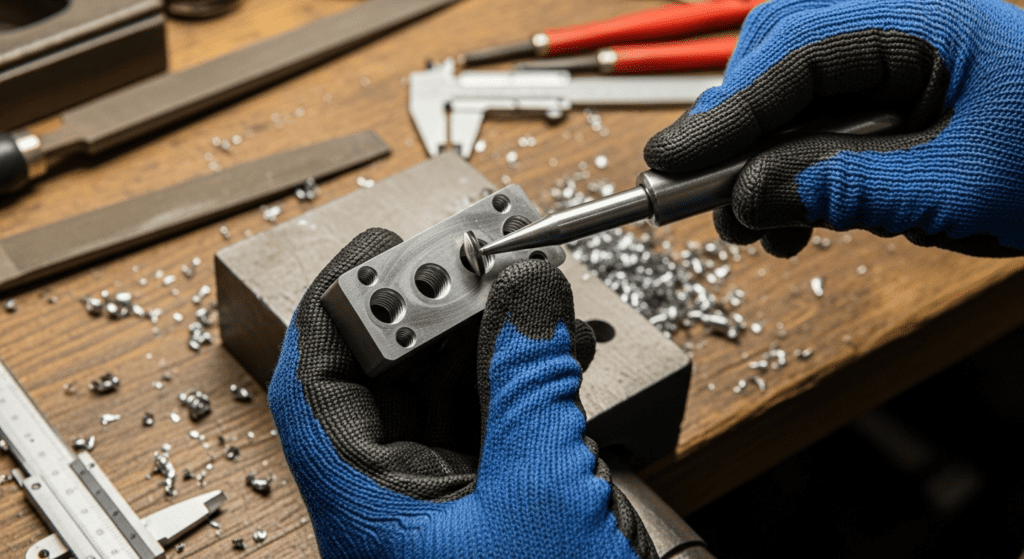In precision manufacturing, burrs are more than a cosmetic flaw — they can cause safety hazards, assembly issues, and premature part failure. When working with small batches, delicate parts, or in the field, hand deburring is often the best approach.
I’ve spent countless hours removing burrs from castings, machined flanges, and drilled plates where power tools were either too aggressive or physically impractical. Done right, hand deburring gives you control, protects part geometry, and delivers a clean, professional finish.

Start with a visual and tactile inspection.
Different burrs require different tools: a thin feather burr might just need a light scrape, while a heavy rolled burr may need filing.
A moving part is a dangerous part. Clamp the workpiece in a bench vice with soft jaws (aluminum, copper, or plastic inserts) to prevent marring.
Match the tool to the hole’s size and burr type:
Example: On a 12 mm drilled hole in a mild steel plate, a single-flute countersink turned by hand removes the burr cleanly without over-enlarging the hole.
Insert the tool gently into the hole.
Pro tip: For blind holes, use a deburring blade with a hooked tip to reach the bottom edge.
Even after burr removal, edges can feel sharp. Wrap fine-grit abrasive cloth or a strip of Scotch-Brite around a wooden dowel and rotate it inside the hole.
Metal filings left inside a hole can cause wear or contamination.
Use gauge pins or calipers to confirm hole size.
Hand deburring is not about brute force — it’s about control and precision. When done properly, it extends part life, improves safety, and ensures dimensional accuracy without expensive machinery.
At metal-castings.com, we supply precision deburring tools and abrasive materials suited for both workshop and field applications. If you’re working with cast components, pairing the right tool with the right technique can save hours and avoid costly rework.
